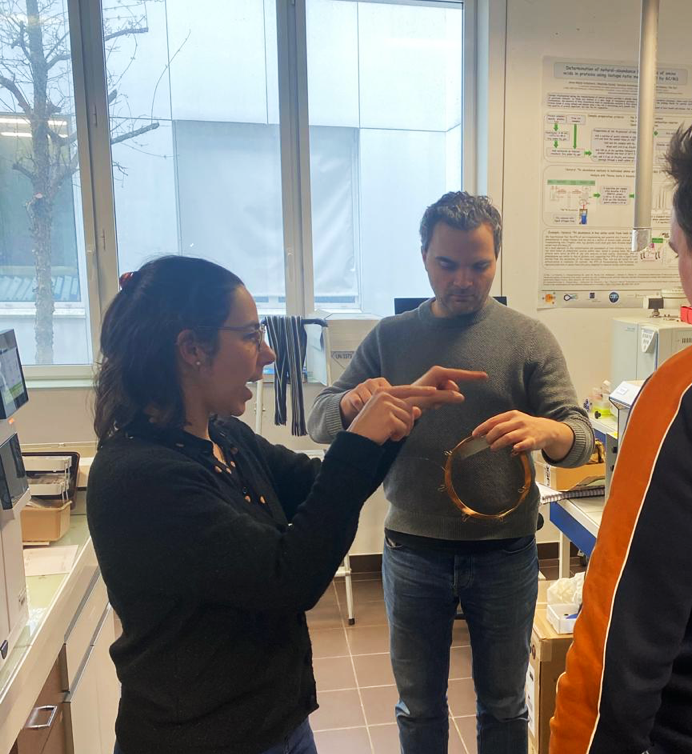2024.04.19
【WRH】 Associate Professor Gilbert Alexis visited University of Nantes in France
Associate Professor Gilbert Alexis has returned from two months stay in Nantes supported by the WRH Faculty Research Abroad Program. This is a report on the activities and results of his stay.

Prof. Gilbert in the middle
| Destination Institution | CEISAM Laboratory, University of Nantes |
| City and Country | Nantes, France |
| Host Researcher | Illa TEA, Associate Professor |
| Travel Period | 2024/01/15 – 2024/03/15 (60 Days) |
| Project Title | (Japanese) 安定同位体分析による医療診断 |
| (English) Position-specific isotope analysis as a medical diagnosis tool |
The variation of stable isotope ratios (2H/1H. 13C/12C, 15N/14N) is an invaluable source of information on the origin and history of a molecule. As such, stable isotopes could be an interesting tool to (i) understand changes in metabolic activities in cancer vs healthy cells and (ii) diagnose cancers for which current diagnoses are insufficient.
While differences in isotope ratios in cancer and healthy cells have been reported (Tea et al. 2016), the causes underlying these differences remain to be elucidated. This project aims at advancing both of these aspects by employing new methods, namely, position-specific isotope analysis, to improve our capability to diagnose and understand changes in metabolisms due to cancer proliferation.
In this project, we propose to develop methods for the precise measurement of 15N and 13C PSIA to molecules, amino acids and organic acids in particular, which isotope composition can record metabolic changes and thus have the potential to improve our understanding and diagnostic capability.
The collaboration between Dr. Illa Tea and Dr. Alexis Gilbert has started in January 2024. The goal was to implement the device used in Tokyo for 13C-PSIA to the University of Nantes in order to measure 15N-PSIA some metabolites. We could implement the method for 13C-position-specific isotope analysis, and successfully measured simple molecules such as ethanol and pentane. Implementing the device for 15N analysis has been slightly delayed due to the constraints below:
- The parts required to implement the system in Nantes took some time to be delivered
- After a thorough literature review, it appears that some, if not all, of the analytes that we targeted (arginine, ornithine, citrulline) may not produce enough fragments for a complete 15N-PSIA measurement.
Due to the constraints mentioned above, we decided to slightly remodeled the original plan by (i) discussing alternative methods to measure the 15N-PSIA of these target molecules (ii) building a metabolic model including isotope effects at natural abundance. The latter is of importance to understand the connection between 13C and 15N signatures in cancer cells. Using the model, we were in particular able to show that 13C-PSIA of amino acids directly linked to carbon central metabolism (alanine, glutamate, aspartate) could provide important new target molecules for cancer diagnosis (Gilbert & Tea, in prep.). We therefore wish to continue the collaboration with the measurement of 13C-PSIA of metabolite from cancer cells and healthy cells.
Related links:
– World Research Hub (WRH) Program
– Gilbert, Alexis

